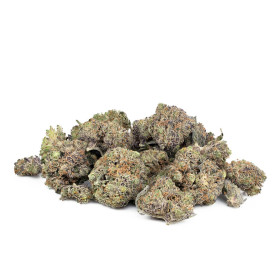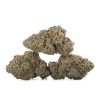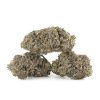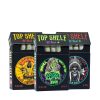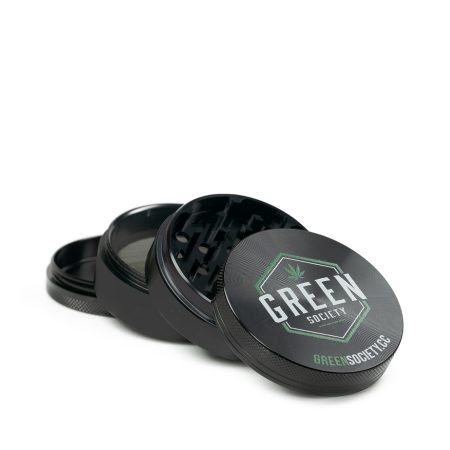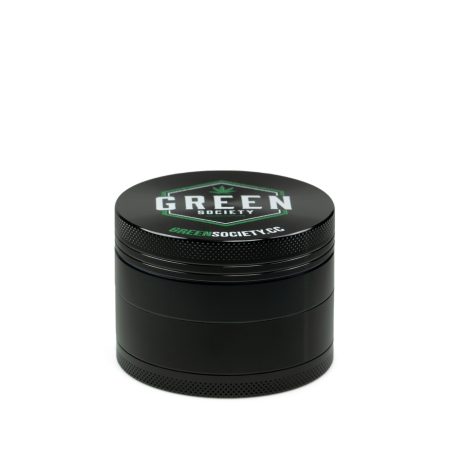Marijuana
Cannabis and Interactions With Other Medications Explained
Mixing cannabis with prescription drugs is a lot more complicated than most people think. In fact, a 2023 review identified 57 common medications that can interact with cannabis because of shared metabolic pathways. Most would assume these interactions are all minor, but the real story is that some combinations can completely change how your medication works and even raise the risk of severe side effects. Knowing what really happens inside your body might surprise you.
Table of Contents
- Why Interactions With Other Medications Matter
- Common Cannabis And Prescription Drug Interactions
- How To Use Cannabis Safely With Other Medications
- Tips For Talking To Your Healthcare Provider
Quick Summary
| Takeaway | Explanation |
|---|---|
| Understand cannabis medication interactions | Cannabis can significantly alter how other medications are metabolized, affecting their efficacy and safety. |
| Consult healthcare providers regularly | Open communication with healthcare professionals about cannabis use is essential for safe medication management. |
| Disclose complete cannabis usage | Provide details on frequency, dosage, and method of consumption for tailored medical advice. |
| Be cautious with high-risk medications | Avoid cannabis with central nervous system depressants and other high-risk drugs to prevent dangerous side effects. |
| Monitor your body’s response | Start with low doses of cannabis and keep track of any unusual symptoms to ensure safety. |
Why Interactions With Other Medications Matter
Understanding potential interactions between cannabis and other medications is crucial for maintaining your health and preventing unexpected complications. Cannabis contains complex compounds that can significantly impact how other drugs function in your body, making it essential to approach medication management with careful consideration.
The Metabolic Complexity of Cannabis Interactions
Cannabis interacts with medications through a sophisticated mechanism involving the body’s enzyme systems. Research from the National Center for Biotechnology Information reveals that cannabis primarily affects the cytochrome P450 enzyme system, which plays a critical role in drug metabolism. This interaction can dramatically alter how different medications are processed, potentially leading to increased or decreased drug effectiveness.
Tetrahydrocannabinol (THC), the primary psychoactive compound in cannabis, is metabolized by specific enzymes like CYP3A4 and CYP2C9. Studies published in medical journals demonstrate that medications targeting these same enzymes can cause significant changes in THC levels, potentially intensifying side effects or reducing therapeutic benefits.
Potential Risks of Medication Interactions
Combining cannabis with certain medications can create complex and potentially dangerous scenarios. Central nervous system depressants pose a particularly noteworthy risk. Medications such as benzodiazepines or opioids, when used alongside cannabis, can produce additive sedative effects. This combination might lead to increased drowsiness, impaired cognitive function, and in severe cases, respiratory depression.
Patients taking blood thinners, antidepressants, or medications for chronic conditions should exercise extreme caution. The enzymatic interactions can cause these drugs to remain in the bloodstream longer than intended, potentially increasing the risk of side effects or reducing the medication’s intended therapeutic impact.
Personalized Medical Guidance is Essential
Given the intricate nature of drug interactions, consulting healthcare professionals becomes paramount. Every individual’s metabolism, medication regimen, and cannabis usage are unique. A personalized approach ensures that potential risks are thoroughly evaluated and managed. Medical practitioners can provide tailored advice based on your specific health profile, helping you navigate the complex landscape of cannabis and medication interactions safely.
Remember that transparency with your healthcare provider is key. Disclose your cannabis usage, including frequency, method of consumption, and dosage. This information allows medical professionals to make informed recommendations and adjust your treatment plan accordingly, minimizing potential adverse interactions and optimizing your overall health management.
Common Cannabis and Prescription Drug Interactions
Navigating the complex landscape of cannabis interactions with prescription medications requires a comprehensive understanding of potential pharmacological risks. While cannabis offers therapeutic benefits for many individuals, its interaction with various prescription drugs can lead to unexpected and potentially dangerous outcomes.
Enzyme System Interactions and Metabolic Pathways
Research published in medical journals reveals a sophisticated mechanism of interaction between cannabis compounds and the human metabolic system. Tetrahydrocannabinol (THC) and cannabidiol (CBD) are metabolized through specific liver enzymes, primarily CYP3A4, CYP2C9, and CYP2C19. These enzymatic interactions can significantly alter drug metabolism, potentially leading to increased or decreased medication effectiveness.
A comprehensive 2023 systematic review identified 57 medications with potential interactions due to shared metabolic pathways. This extensive research underscores the complexity of cannabis interactions and the critical need for careful medical supervision when using cannabis alongside prescription medications.
High-Risk Medication Categories
Certain medication categories demonstrate particularly significant interaction risks with cannabis. Blood thinners like warfarin can experience altered anticoagulation effects, potentially increasing bleeding risks. Antidepressants, particularly selective serotonin reuptake inhibitors (SSRIs), may encounter heightened side effects or reduced therapeutic efficacy when combined with cannabis.
Central nervous system medications represent another critical interaction zone. Benzodiazepines, opioid pain medications, and sedatives can produce compounded sedative effects when used concurrently with cannabis. These interactions might result in excessive drowsiness, impaired cognitive function, and in severe cases, respiratory depression.
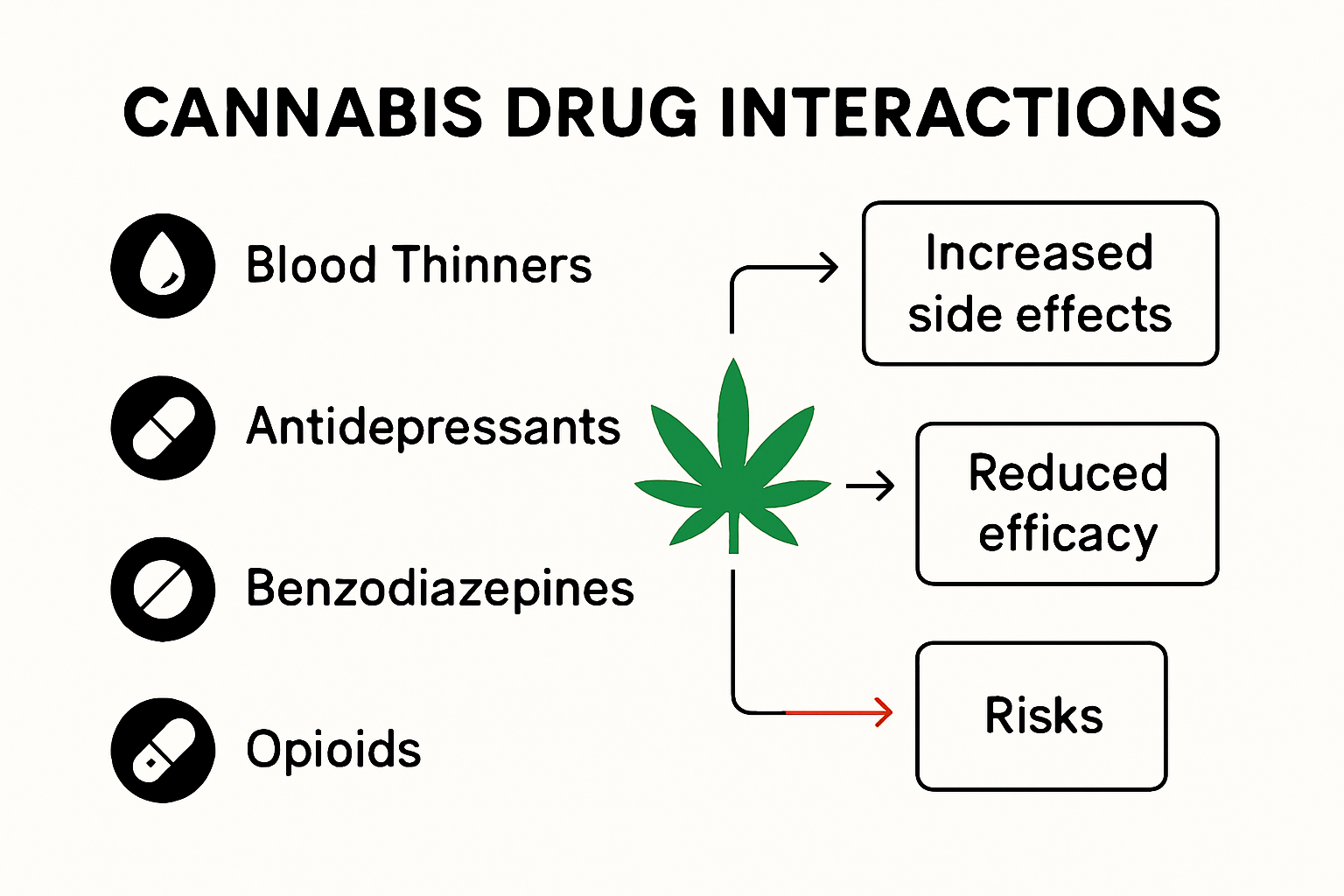
To help you quickly assess which types of medications are considered high-risk when interacting with cannabis, the following table summarizes key medication categories, their associated risks when used with cannabis, and relevant examples mentioned in the article.
| Medication Category | Potential Risks with Cannabis | Examples |
|---|---|---|
| Blood Thinners | Altered anticoagulation, increased bleeding | Warfarin |
| Antidepressants (e.g., SSRIs) | Heightened side effects, reduced efficacy | Fluoxetine, Sertraline* |
| Benzodiazepines | Compounded sedation, respiratory depression | Diazepam, Alprazolam* |
| Opioid Pain Medications | Increased sedation, respiratory depression | Oxycodone, Codeine* |
| Sedatives | Excessive drowsiness, impaired cognition | Z-drugs* |
*Examples are typical medications in these categories, as referenced in the article’s context.
Precision in Medical Management
Emerging pharmaceutical research emphasizes the importance of individualized medical approaches when considering cannabis use alongside prescription medications. Genetic variations in enzyme systems mean that interaction effects can vary dramatically between individuals.
Healthcare providers recommend a structured approach to managing potential interactions:
- Comprehensive Disclosure: Patients must provide complete information about cannabis consumption, including frequency, dosage, and consumption method.
- Regular Monitoring: Frequent medical check-ups can help detect and mitigate potential adverse interactions early.
- Dosage Adjustment: Healthcare professionals might need to modify prescription medication dosages to account for cannabis interactions.
While these interactions can seem daunting, they do not universally preclude cannabis use. Instead, they underscore the importance of open, transparent communication with healthcare providers and a personalized, careful approach to medication management.
Patients should never adjust their medication regimens independently. Professional medical guidance remains the gold standard for safely navigating the complex interactions between cannabis and prescription drugs.
How to Use Cannabis Safely With Other Medications
Safely integrating cannabis into a medication regimen requires a strategic and informed approach. Understanding the nuanced interactions between cannabis and prescription drugs is essential for minimizing potential risks and maintaining overall health.
Consultation and Professional Guidance
The American Board of Family Medicine emphasizes the critical importance of transparent communication with healthcare providers. Patients must disclose their cannabis usage comprehensively, including frequency, consumption method, and dosage. This transparency allows medical professionals to assess potential interactions and provide personalized recommendations.
Healthcare providers can conduct thorough medication reviews, evaluating potential enzymatic interactions and recommending appropriate adjustments. They may suggest alternative consumption methods, adjust dosages, or propose alternative treatment strategies that minimize interaction risks.
Strategic Cannabis Consumption
Research published in medical journals recommends a cautious approach to cannabis usage when taking other medications. Starting with low THC doses and practicing careful titration can significantly reduce potential adverse interactions. This method allows patients to monitor their body’s response and minimize unexpected side effects.
Key strategies for safe cannabis consumption include:
- Controlled Dosage: Begin with minimal cannabis doses and gradually increase under medical supervision.
- Consistent Monitoring: Pay attention to bodily responses and report any unusual symptoms to healthcare providers.
- Product Selection: Choose cannabis products with known and consistent cannabinoid profiles.
Understanding Product Variability and Interactions
An updated review from the NCBI Bookshelf highlights the complexity of cannabis interactions due to variations in product composition. Both THC and cannabidiol (CBD) can inhibit CYP450 enzymes, potentially altering medication metabolism.
Patients should consider several critical factors:
- Product Composition: Different cannabis products contain varying concentrations of active compounds.
- Consumption Method: Inhalation, oral consumption, and topical applications can produce different metabolic responses.
- Individual Metabolism: Genetic variations mean interaction effects can differ significantly between individuals.
Additional precautions include avoiding cannabis use before surgical procedures, as acute cannabis consumption can complicate anesthesia and recovery. Patients should also be aware that some medications may require dosage adjustments when used concurrently with cannabis.
Ultimately, safe cannabis use with other medications demands a personalized, collaborative approach. Regular communication with healthcare professionals, careful monitoring, and a willingness to adjust treatment strategies are paramount to minimizing potential risks and optimizing therapeutic outcomes.
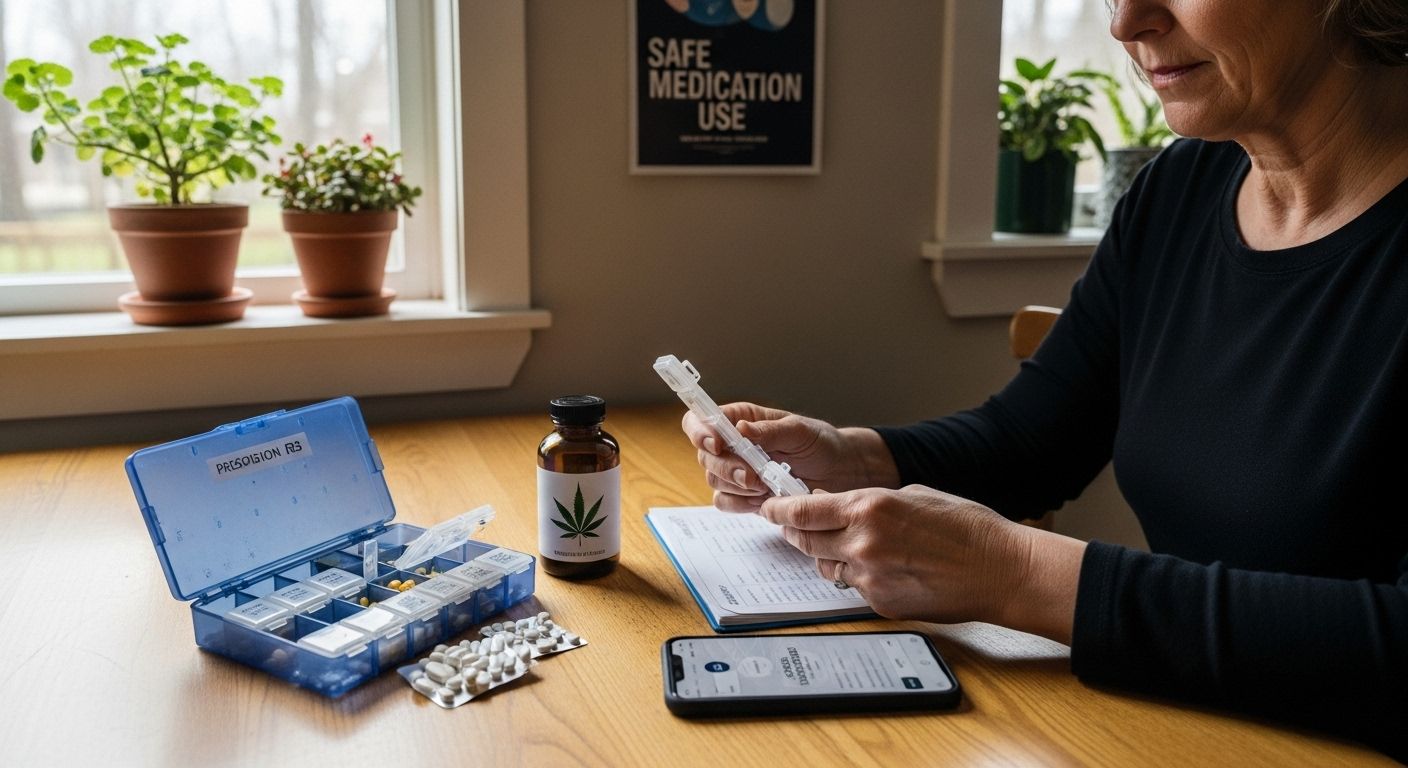
Tips for Talking to Your Healthcare Provider
Effective communication with healthcare providers about cannabis usage is crucial for maintaining your overall health and ensuring safe medical treatment. Approaching these conversations with honesty, preparation, and confidence can help you receive the most appropriate medical guidance.
Preparing for the Conversation
The National Cancer Institute emphasizes the importance of transparent communication about all substance and medication use. Before your medical appointment, take time to gather comprehensive information about your cannabis consumption. This preparation will help you provide clear, detailed insights to your healthcare provider.
Key details to document and discuss include:
- Consumption Frequency: How often you use cannabis
- Dosage and Potency: Typical amounts and THC/CBD concentrations
- Consumption Methods: Smoking, vaping, edibles, tinctures, or topical applications
- Medical or Recreational Purpose: Your primary reasons for cannabis use
- Duration of Use: How long you have been consuming cannabis
If you are preparing to discuss your cannabis use with a healthcare provider, use this checklist table to ensure you cover all the key points identified in the article for a productive conversation.
| Information to Share | Have You Prepared This? |
|---|---|
| Consumption Frequency | |
| Dosage and Potency (THC/CBD) | |
| Consumption Methods | |
| Medical or Recreational Purpose | |
| Duration of Use |
Addressing Potential Concerns and Stigma
Many patients feel anxious about discussing cannabis use with healthcare providers due to historical stigmatization. Remember that medical professionals are primarily concerned with your health and well-being. Modern healthcare increasingly recognizes cannabis as a potential therapeutic tool with complex medical implications.
Strategies for navigating potentially uncomfortable conversations:
- Be Direct and Honest: Provide clear, factual information without defensiveness
- Ask Questions: Seek clarification about potential interactions or health concerns
- Request Non-Judgmental Guidance: Emphasize your desire for professional medical advice
Understanding Collaborative Healthcare
Your healthcare provider is a partner in managing your health. The conversation about cannabis should be viewed as a collaborative process aimed at developing the most effective treatment strategy. Be open to their professional recommendations and potential alternative approaches.
Important discussion points include:
- Potential interactions with current medications
- Impact on existing health conditions
- Recommended safe consumption practices
- Potential alternative treatment options
If your current healthcare provider seems uncomfortable or dismissive, consider seeking a second opinion from a provider who demonstrates a more comprehensive understanding of cannabis and its medical implications.
Remember that comprehensive healthcare involves mutual respect, open communication, and a shared commitment to your well-being. By approaching the conversation with preparation, honesty, and a collaborative mindset, you increase the likelihood of receiving personalized, effective medical guidance regarding cannabis use.
Frequently Asked Questions
What potential interactions should I be aware of when using cannabis with other medications?
Combining cannabis with certain medications, especially those processed by the liver’s cytochrome P450 enzyme system, can alter drug metabolism. This can lead to increased side effects or decreased effectiveness of the medications, particularly with blood thinners, antidepressants, and central nervous system depressants.
How can I safely use cannabis if I’m on medication?
It’s essential to consult with your healthcare provider about your cannabis use, including dosage and method of consumption. Start with low doses and monitor your body’s response, adjusting your intake based on professional guidance and personal experience.
Why is it important to disclose cannabis use to my healthcare provider?
Full disclosure of cannabis use helps healthcare providers assess potential interactions with your existing medications and tailor advice to manage your health effectively. Transparency is key to minimizing risks and enhancing treatment outcomes.
What specific medications are considered high-risk when combined with cannabis?
Medications that pose significant risks include blood thinners (like warfarin), antidepressants (especially SSRIs), benzodiazepines, opioids, and sedatives. These can interact negatively with cannabis, heightening the risk of side effects such as increased sedation and impaired cognitive function.
Shop Cannabis Confidently with Clarity on Medication Safety
Understanding the possible interactions between cannabis and your prescription medications can feel overwhelming. If you have ever worried about how THC or CBD might impact your health regimen, you are not alone. You deserve peace of mind, and this is where quality, transparency, and guidance make all the difference. At GreenSociety.cc, you will find detailed product descriptions and clear potency labels, so you know exactly what you are purchasing. Take control over your cannabis use, whether you are looking for flowers, edibles, or CBD products, and make informed decisions that fit your personal wellness needs.

Ready to explore safe and high-quality options tailored for your health and lifestyle? Browse the wide selection at GreenSociety.cc, and visit our helpful FAQs and Guides to get trusted answers before you buy. Prioritize your safety and convenience by taking your next step towards a reliable cannabis experience today.
Recommended
- How to Keep Cannabis Fresh: Proven Tips for 2025 ~ Green Society Blog
- Best Hash Strains in 2025 for Canadian Consumers ~ Green Society Blog
- How to Roll a Joint: Easy Steps for Canadians 2025 ~ Green Society Blog
- Best Cannabis Storage Containers in Canada 2025 ~ Green Society Blog




